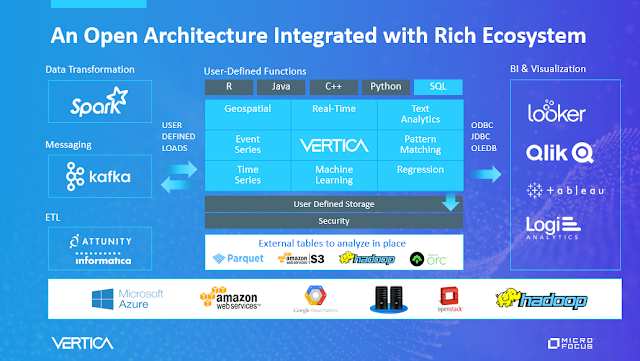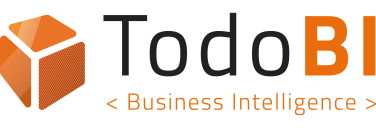
The latest version of Vertica was released earlier this month and with it comes a host of new features. In Vertica 9.2, we introduced several new features including:
- Eon Mode Updates
- Management Console changes
- Performance improvements
- Upgrade and installation changes
- Voltage SecureData updates
Info de Vertica y servicios en español
(la mejor Base de Datos analítica)
Eon Mode Updates
The Eon Mode updates only affect users on AWS. You can now create branches of your Eon Mode database. A branch is a snapshot of your database that you revive like you would a regular Eon Mode database. Changes you make to a branch do not affect the master database. Currently, branches are data-immutable, meaning that you cannot perform an action on a branch that changes the underlying storage containers. The master database and branches share the same storage containers. Branches are useful for:
- Creating a stand-in for your database while it is down for maintenance or upgrades.
- Running analytics without impacting your database’s performance for other users. You can create several branches to execute costly queries in parallel and still maintain your database’s usual workload.
- Perform tests of new queries in a sandbox environment before deploying them to your live database.
See
Branching an Eon Mode Database
for more information.
Management Console Changes
These Management Console updates only affect users on AWS. When you create or revive a Vertica cluster on AWS using Management Console, you can now select from a list of Vertica database versions with a Linux operating system. After your Vertica database is upgraded, you cannot downgrade your database later.
When you add one or more EC2 instances to scale up your Vertica cluster on AWS, you can now enter tag values for each instance. By default, Management Console pre-fills with tag values for the first existing instance. Tagging instances is optional.
Performance Improvements
In past releases, the optimizer used a fast plan to refresh a table with a single live aggregate projection (LAP). As of this 9.2, the optimizer applies the refresh operation on each table LAP as a separate transaction and applies the fast plan to each LAP. Doing so significantly reduces the total time required to refresh tables with multiple LAPs.
Vertica 9.2 also significantly reduces how much memory the database catalog consumes. It does this by consolidating the amount of metadata it maintains to track ROS storage containers.
Upgrade and Installation Changes
Vertica has removed support for pre-join and range segmentation projections. If a table’s only super-projection is one of these projection types, the projection is also regarded as unsafe. Before upgrading to a release higher than Vertica 9.0.x, you are strongly urged to check your database for unsupported projections.
Be sure to download and run the pre-upgrade script. You can download the script and obtain detailed information on its usage at this location:
https://www.vertica.com/pre-upgrade-script/
Voltage SecureData Updates
The way you configure the Voltage SecureData changes in Vertica 9.2. In 9.2, the options that should be set globally for all users have been moved to a new function named VoltageSecureConfigureGlobal. To use the SecureData integration, you must set the SecureData Appliance’s policy URL using this function.
We hope you get started with these exciting new features! And keep a look out for our next What’s New blog that will come with the next release. These are the highlights, for information on additional new features, see
Vertica 9.2.x New Features and Changes
.


